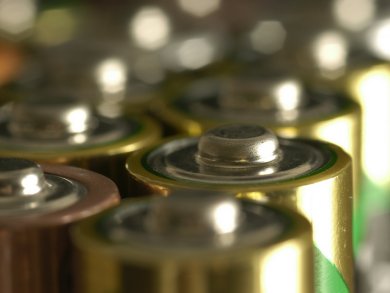One of the major expenses in battery production is the cost of the membrane separators that inhibit the direct contact (short circuit) of the electrodes. Galen Suppes and co-workers, University of Missouri, USA, have aimed to reduce battery costs by reducing the use of separators and increasing the thickness of electrodes. They have developed a new type of flow battery that pumps electrolyte between reagents loaded in packed-bed electrodes separated by a permeable ion-exchange material.
The flow battery developed differs from traditional flow batteries as all reagents and products are solids and part of the electrodes. Using this design, the team have shown that the ions can be pumped between the electrodes faster than is possible with diffusion alone. The distance between electrodes can also be increased from microns to millimeters, and even up to centimeters, without any reduction in the rate of mass transfer.

Image: (c) Wiley
- High-energy density flow battery validation
G. J. Suppes, B. D. Sawyer, M. J. Gordon
AIChE Journal 2011.
DOI: 10.1002/aic.12390




